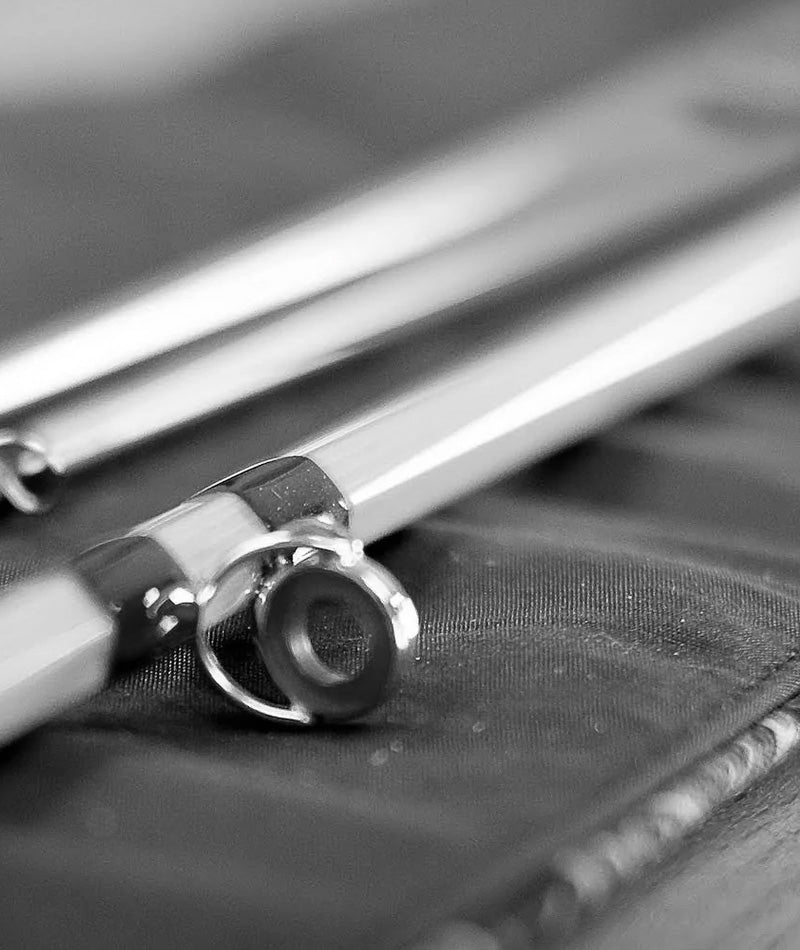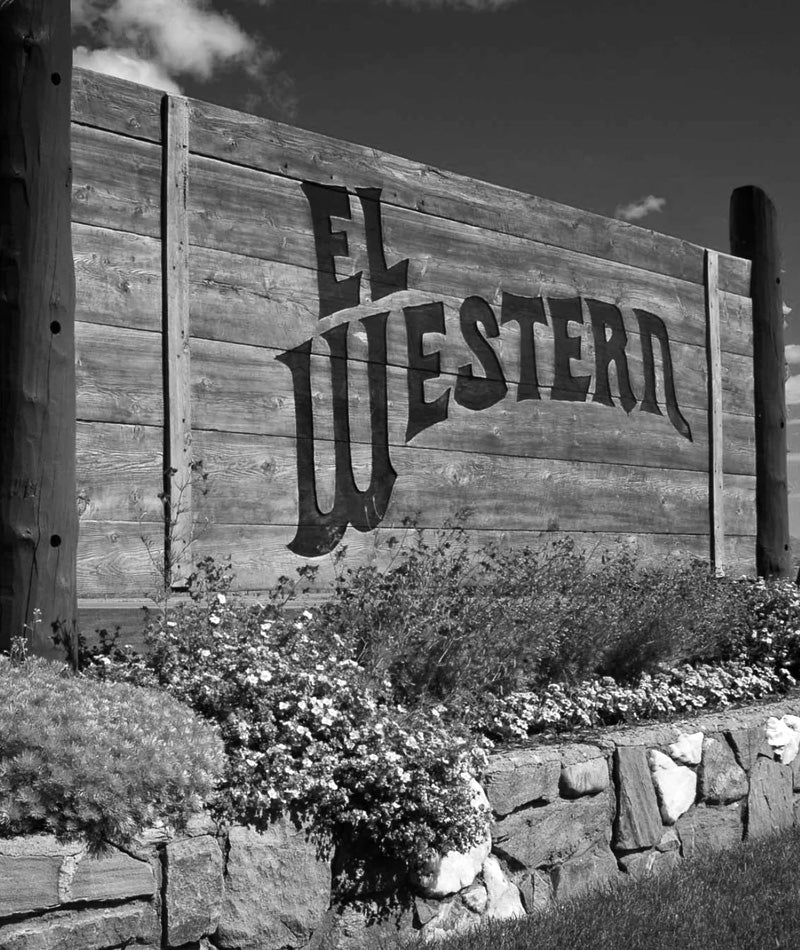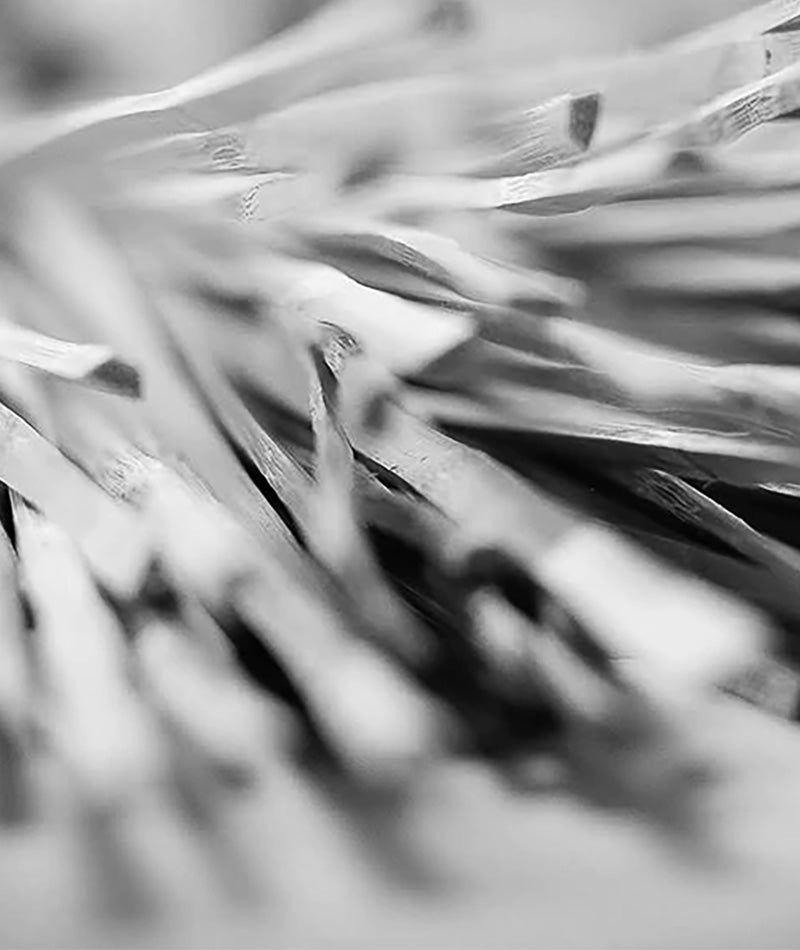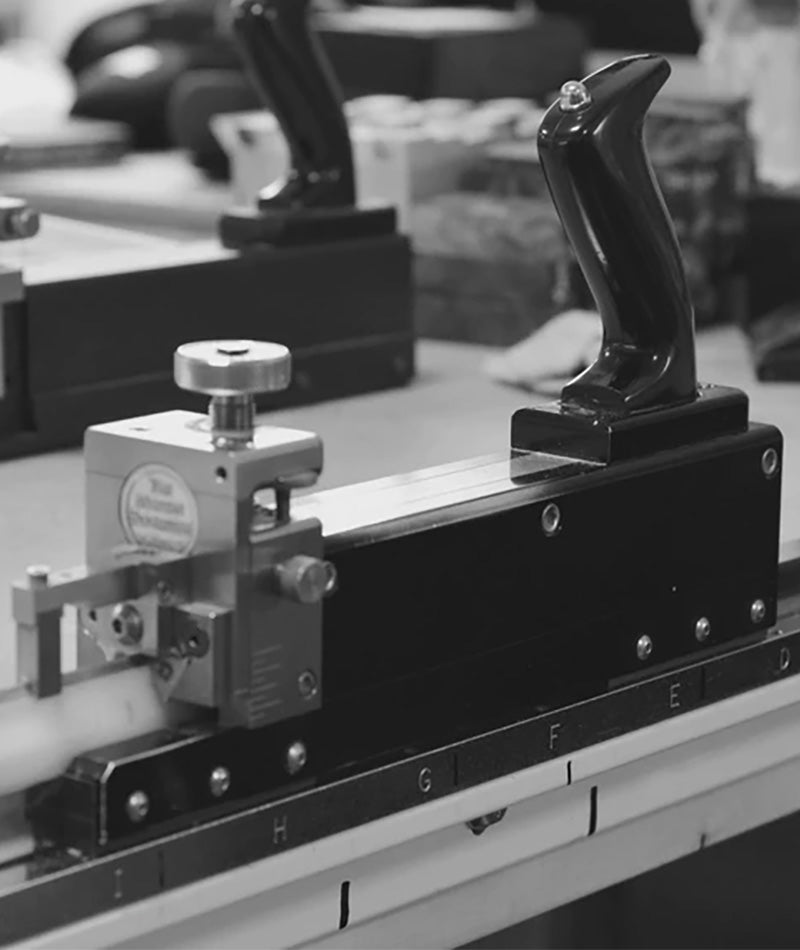
In Tom's Words
For many of today's anglers, bamboo rods bring back memories of bygone years, of a time when fishing was simpler, perhaps less demanding. Back in a time when bamboo was really the only rod material and before modern technology enabled us to create the wide range of rods on the market today. Yet, some anglers, including myself, still think fondly of bamboo rods as wonderful instruments for casting and fishing. My first fishing experiences were with an old Montague bamboo rod, when I fished for cutthroat trout in a small mountain stream in southwestern Montana, when, lacking finesse, my only thoughts were how could I fool a fish by sneaking a grasshopper into the stream without being seen.
Early History
I grew up at my parents' El Western Motel in Ennis, Montana, home of the famous Madison River. It was there I met my fly fishing mentor, Howard Sykes, a skillful fly fisher from New Jersey, under whose careful eye my love for fly-fishing blossomed. Howard's favorite rod was a Leonard bamboo. As he taught me to cast and to fly fish, he often let me use it, and I became enamored of its precision and grace in presenting a fly.

Bamboo Tradition
In those days, I often showed our motel guests where to fish, and gradually I grew into an early career as a fishing guide. Anglers came from all over the United States to fish the Madison River and nearby streams, and I regularly guided many of them. Naturally, they always brought with them their favorite rods, bamboo rods made by Winston, Orvis, Leonard, Powell, Payne, Phillipson, and Paul Young. Many of these rods were the finest examples of bamboo rod making, and, as these anglers let me try their rods, my appreciation for bamboo rods grew, as did my passion for them. As a result of these experiences, I assembled my own collection of bamboo fishing rods including an old Heddon, a Phillipson, an Orvis Battenkill, and several Winstons. I fished almost exclusively with bamboo rods until the early '70s.
At the time I had no idea one day I would own one of the famous companies in fly-fishing, the R.L.Winston Rod Company. When I bought Winston in 1973, the company was making fiberglass and bamboo rods. Shortly thereafter, graphite was introduced as a rod-making material, and it quickly replaced fiberglass. Even though the bulk of our rods were made from composite materials during my tenure at Winston, we continued making fine bamboo rods. My early associate and finally a partner, Glenn Brackett, and I greatly valued the tradition of bamboo rods, and we were clear we wanted to continue their heritage in Winston's history and the sport of fly-fishing. We continually refined the rod tapers and production methods to improve the quality necessary for great rods. This work gave me extensive experience working with bamboo, designing rod tapers, and creating rods.

Bamboo Heritage
Despite the popularity of fiberglass and graphite as rod-making materials, they haven't entirely replaced bamboo rods, many of which are still highly prized by anglers not only for their collector's value but also for their great fishing attributes. How could this be? Perhaps the greatest reason is bamboo rods have been the foundation of our modern fly fishing heritage since the late 1800s. There have been countless rodmakers pursuing the craft of designing and building rods to match their ideas for the perfect casting and fishing rod. Many of these rods are truly works of art; they represent the attainment of near perfection in the embodiment of form and function.
Charming Characteristics
Bamboo rods have an inherent charm because of their natural material and are often especially beautiful with their jewel-like hardware, subtle thread colors, carefully wrapped guides, graceful cork grips, and wood seats. The natural color of bamboo is a light straw color and, with heat-treating, ranges to a dark caramel tone. Its delicate grain radiates through the typical high gloss varnish finish and the various colored wrapping threads serve to highlight this natural beauty. Bamboo as a natural material is also unparalleled in its strength and resilience. Most rods created decades ago still retain their original casting and fishing capability. Moreover, there is a substantial market for used bamboo rods created by master craftsmen from previous eras, and, happily, many of these rods are still fished. The fine bamboo rods created in the past have continued to increase in value over time because of their intrinsic value and the fact the craftsmen who made them are no longer alive.
And, finally, there is another reason many modern anglers often forget or overlook about bamboo rods. They can be absolutely great fishing rods! Just because they are bamboo doesn't mean they are great rods, but the material certainly has the potential to be made into wonderful rods. As with any rod making material, proper design is crucial. In my opinion, because of its inherent heavier weight over other materials, bamboo is the most challenging material with which to design rods to achieve wonderful action. However, this relatively small increase in weight, particularly in trout rods, is also one of its advantages, for this additional weight gives these rods an inherent loading characteristic that makes them very smooth casting.
Morgan Handmill
In the middle 1990s, I invented and then completed the design work for the Morgan Bamboo Hand Mill. This revolutionary mill allows a bamboo rod maker to cut bamboo strips easily and accurately to carry on the long tradition of making bamboo rods without a major investment in a power-milling machine.

Building the Business
In early 1999, Bill Blackburn, an amateur bamboo rod maker from Bozeman, Montana, who had built several rods using a traditional planing form and hand plane ordered a Hand Mill. When he came to pick up his mill, I asked him if he knew of anyone I could hire to help me build Hand Mills. As it so happened, Bill was looking for a job. Not only did he make bamboo rods, but he also had a degree in industrial arts. This was a great combination to help produce the Hand Mills because he understood how bamboo strips had to be cut for rods, and he was familiar with machinery. I hired Bill immediately.
At the beginning of our rod-making business, we didn't think it would be practical to build bamboo rods since we would have to make a power-milling machine, a daunting task. In addition, Gerri wouldn't have enough time to build the graphite rods and do all of the bamboo work. However, we saw a great opportunity for Bill to devote some time to building bamboo rods in addition to working on the Hand Mills. So soon after Bill came to work for us, Gerri and I talked with him about the possibilities of building bamboo rods, and we all enthusiastically decided it would be a great project. The three of us would work cooperatively to build the rods. So, as it turned out, my invention of the Hand Mill allows us to build fine bamboo rods.
Bill and I started putting together our bamboo shop with Bill working under my direction since I couldn't do the physical work. We had to build the oven, calibrate it for proper heat-treating, build and fine-tune the glue binder, and attend to the many other details of a bamboo shop. I must admit it took a lot longer than I anticipated getting our shop ready to build bamboo rods, but we took our time to make sure everything was right and worked well.
Refining the Process
In 2011 Bill moved on and we hired Zac Sexton as Bill’s replacement for our bamboo rod making. We worked together and he did a lot of good work for us. He left in late spring of 2013 to pursue a job at a guest ranch in southwestern Montana.
After Zac left Gerri and I were looking for an experienced bamboo rod maker to help with our rods, and as you might surmise there are very few, if any, around much less have the experience we required. I heard Jason Fox might be available and gave him a call. As it turned out he had just left Sweetgrass Rods in Twin Bridges where he had worked for over three years doing everything associated with building bamboo rods.
His primary duty was varnishing and setting up a dip varnish system that would work with their production. Jason varnished somewhere in the range of 6-700 rods. We had our varnish cabinet and system set up but Jason refined the processes to provide coatings that required much less polishing than before.
In addition to varnishing Jason worked wherever he was needed and had the opportunity to refine and master many skills of the craft by doing everything many times over. He made over 100 rods at Sweetgrass from scratch.
Having the opportunity to work under Glenn Brackett and Jerry Kustich at Sweetgrass Rods was an exceptional opportunity to learn bamboo rod making under masters. In addition to that experience he had built bamboo rods on his own with a Handmill he purchased from us prior to working at Sweetgrass so was experienced with it too.
Of course, Jason is a very experienced bamboo rod fisherman which adds greatly to his enthusiasm for rod making. He loves the action of our rods and is excited to learn my design techniques.
Jason was really excited to have the opportunity to build great rods for us. His experience at making over 100 rods and finishing several hundred more was what we were looking for. Gerri and I love his enthusiasm, excitement, and great desire to build the best bamboo rods possible. His attention to detail is refreshing to see. He is just the rod maker we were looking for to continue our tradition.
Bamboo Details
We purchase our bamboo through a broker who travels to the tiny village of Aozai in the Guangdong Province of China where he hand-selects it. This is the village where the botanist F.C. McClure, who is the Westerner who named this bamboo Arundinaria amabilis in the 1920s, identified as the center of the Tonkin bamboo region.

Life in Guangdong
Our broker thinks things aren't much different now than they were then. The collection of bamboo is still a slow process; the poles are cut by hand and carried out to rivers in small bundles. Upon reaching the river, the bamboo is scrubbed by hand using sand from the riverbank. From there, the poles are either floated down the river in rafts or carried on boats. The bamboo is then dried, sorted, and bundled into groups of ten poles for shipping.
The bamboo I used to get when I was at Winston had several defects, but some of these are absent in what I receive from our broker. The poles no longer have grower's marks that have been scraped on the butts with a knife or heat straightening areas that are damaged when the poles are heated over a fire then bent over an iron stake to straighten them. A great many poles are rejected in China because they are not straight, have large areas of damage or discoloration, have shallow power fiber depth, or are not dense. This presorting provides bamboo poles which have a much higher overall quality than I have seen before. However, because of our rigorous selection, we still only use five to ten percent of this bamboo.
We carefully select our bamboo for straightness, strong power fibers, density, and lack of cosmetic blemishes. When Bill first started sorting the bamboo, he couldn't believe the high rejection rate I insisted on for blemishes and cosmetic defects. However, it has always been my contention bamboo rods should reflect the highest standards of materials and workmanship. All of the preparation work is carefully done to maintain the integrity of the bamboo. First, the twelve-foot long poles are matched for tips or butts in groups of six to twelve poles with the same node spacing. One half the batch is slid past the other so the nodes of one side are offset a few inches from those of the other. The poles are then cut to the proper length. The balance of the pole is used for tips or butts depending on how the original selection was used. Once this selection has been made we split the poles into a double-width strip with a star splitter. The nodes are carefully sanded by holding them by hand against a sanding wheel until the nodes are level.
In Conclusion
I worked with a CAD drawing expert at the local machine shop that makes the Hand Mill parts to design a power milling machine to rough cut a taper on our bamboo strips. On his computer we started drawing it piece by piece until it was finished. Then they made four for me three of which I sold to friends.
We have developed a new technique that greatly improves the straightness of the strips. We first taper the double-wide strips to the height we want for heat treating, taper the sides to the correct width then split them into two strips by using a 60-degree cutter down the middle. The resulting strips are the straightest we have ever seen.
The next step is to heat treat the oversize tapered strips. When we heat treat the strips are bound up into the six strips that make up a butt or tip which straightens them even more. We meticulously monitor the heat-treating to make sure each batch is evenly colored and has the correct tempering. Proper heat-treating is essential to increase the modulus of elasticity of the bamboo and to making it more set resistant. The heat treating is enough to color the bamboo into a rich, warm color. This machine will taper cut the butts and tips until they are enough oversize to safely heat treat. This saves a substantial amount of time final cutting them on the Hand Mill.
Each bamboo strip is hand-milled using the Handmill that provides the proper taper and consistency between strips. In order to keep the rods lightweight, the butts and tips are hollow-fluted, which makes them not only lighter, but also more responsive.









